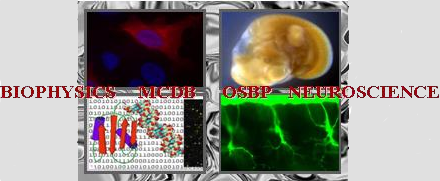Talk abstracts
Talk on Wednesday 04:15-04:30pm submitted by Dongju Park
Ablation of the BRCA1-PALB2 interaction phenocopies Fanconi Anemia
Dongju Park (Molecular, Cellular & Developmental Biology), Stephen Bergin (Comprehensive Cancer Center), Christopher Koivisto (Comprehensive Cancer Center), Thomas Ludwig
Abstract:
Heterozygous mutations in the BRCA1 gene predispose women to breast and ovarian cancer, while biallelic BRCA1 (FANCS) mutations are a cause of Fanconi Anemia (FA). FA is a rare genetic disorder characterized by developmental abnormalities, early-onset bone marrow failure, increased risk of cancers, and hypersensitivity to DNA-crosslinking (ICL) agents. BRCA1 is critical for homology-directed repair (HDR) of DNA double strand breaks (DSBs). Through its coiled-coil domain, BRCA1 interacts with the adaptor protein PALB2 facilitating recruitment of BRCA2 and RAD51 to sites of DNA damage. Interestingly, missense mutations within the coiled-coil domain of BRCA1 (i.e. BRCA1 L1407P) that mediates the interaction with PALB2 have been reported among familial breast cancer patients.
Thus, we hypothesized that if PALB2 regulates and/or mediates BRCA1 tumor suppressor function, ablation of the BRCA1-PALB2 interaction may also elicit genomic instability and tumor susceptibility. To test this hypothesis and to examine the role of the BRCA1-PALB2 interaction in normal and malignant development, we have used a knock-in strategy and generated cells and mice that are defective for the BRCA1-PALB2 interaction (Brca1 L1363P in mice).
Homozygous mutant Brca1L1363P/L1363P pMEFs show impaired proliferation, spontaneous chromosomal aberrations and undergo premature senescence. In addition, mutant MEFs exhibit hypersensitivity to DNA damaging agents (MMC and Olaparib) and following ionizing radiation (IR), mutant cells fail to recruit Rad51 to sites of DNA damage.
Homozygous mutant Brca1L1363P/L1363P mice are viable but exhibit a variety of FA symptoms including growth retardation, hyper-/hypopigmentation, skeletal abnormalities, microphtalmia, and male and female infertility. Furthermore, hematological measurements on Brca1L1363P/L1363P mice showed all mutant animals exhibit macrocytosis and have either died due to bone marrow failure or the development of leukemia.
These results indicate that the BRCA1-PALB2 interaction is critical for the function of BRCA1 in HDR and ICL repair. Furthermore, the Brca1 L1363P knock-in mouse establishes a new disease model for FA.
Keywords: Fanconi Anemia (FA), BReast CAncer susceptibility gene 1 (BRCA1), Homology Directed Repair (HDR)
